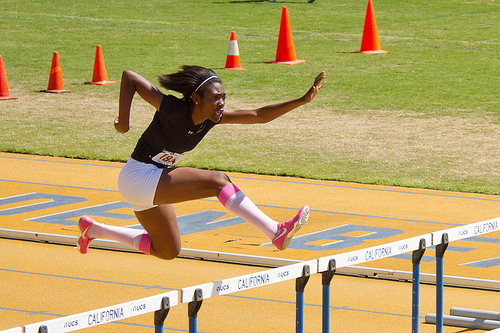a. Finish presentations of student work from last week
b. Semiotics, more:
Barthes, R. (2003). Rhetoric of the image. In L. Wells (Ed.), The photography reader. London: Routledge. (Not my scan)
c. Editing
We are all used to editing ourselves, such as when we write papers.
We also do a form of editing when we forward information – posting, retweeting, whatever we do to pass on information from a source other than ourselves. This is similar to the kind of editing that, say, news media editors do in deciding what stories to cover, what to print (or post), where to place stories on a page or a timeline, and so forth. Editors make decisions about both content and emphasis.
In creating multimedia products we are editing, in several ways. We do a form of editing when we decide what media content to make: photos, video, interviews.
We do another form of editing when we make selections among the available content. We may take 10 minutes of a person talking and reduce that to two. We decide what’s most important (for our purposes) in what they said. With photos, we not only pick images that tell our story, but we may pick those in which our subjects (human or not) look the way we want them. We may pick flattering images, or unflattering ones.
We also make editing decisions in our post-processing of media. In audio, we take out their pauses, their “ums” – we may make them sound better. In processing images, we make decisions have to make decisions in the processing that affect how subjects look – e.g., the infamous OJ Simpson news magazine cover images.
Finally, we make editing decisions in putting all the pieces together. We’ve talked about the power of sound; and about montage and the meanings created from sequencing.
This week we will look more closely at editing. It is a part of our decisions about how we interpret and present what we observe. It also has implications for our relations with our participants and how we represent them.
Most of the discussions that I found about this topic relate to ethics – clearly an important aspect of this topic, but not the only one relevant to us.
- Liz Danzico. 2010. BETWEEN THE LINES: The art of editing: the new old skills for a curated life. interactions 17, 1 (January 2010), 16-19. This overlaps with the topics of interest for us.
- Barrett Golding,From Edit to Air. November 16th, 2001. Special Feature w/ Hearing Voices. A concrete example of editing for radio.
Abstract: Below are three versions of a radio script for Savvy Traveler, the fifth part of a series about bicycling the Lewis & Clark Trail. The left-hand column is the first draft. The middle is the revision based on the comments of the SavTrav Editor, Celeste Wesson. On the right is the final broadcast version, revised after one more editing session. AX stands for actualities (field recording of interviews, sounds, musics); TRAX are my narration tracks. All AX times are actual; times for TRAX are guessed in the first two drafts, and actual for in the final.
Below are from the perspectives of journalism and oral history, not social science research. But very useful.


